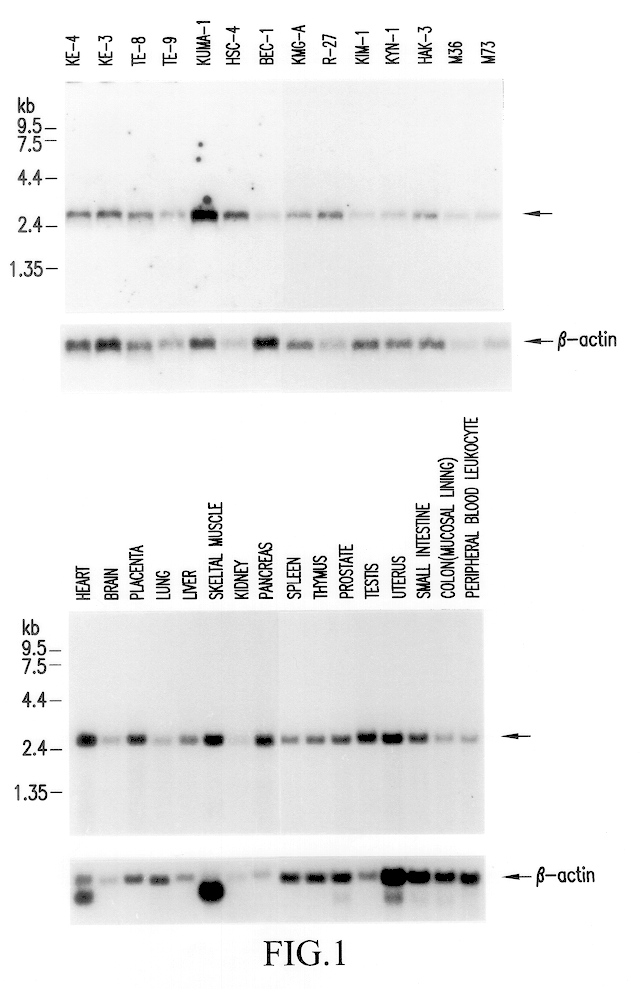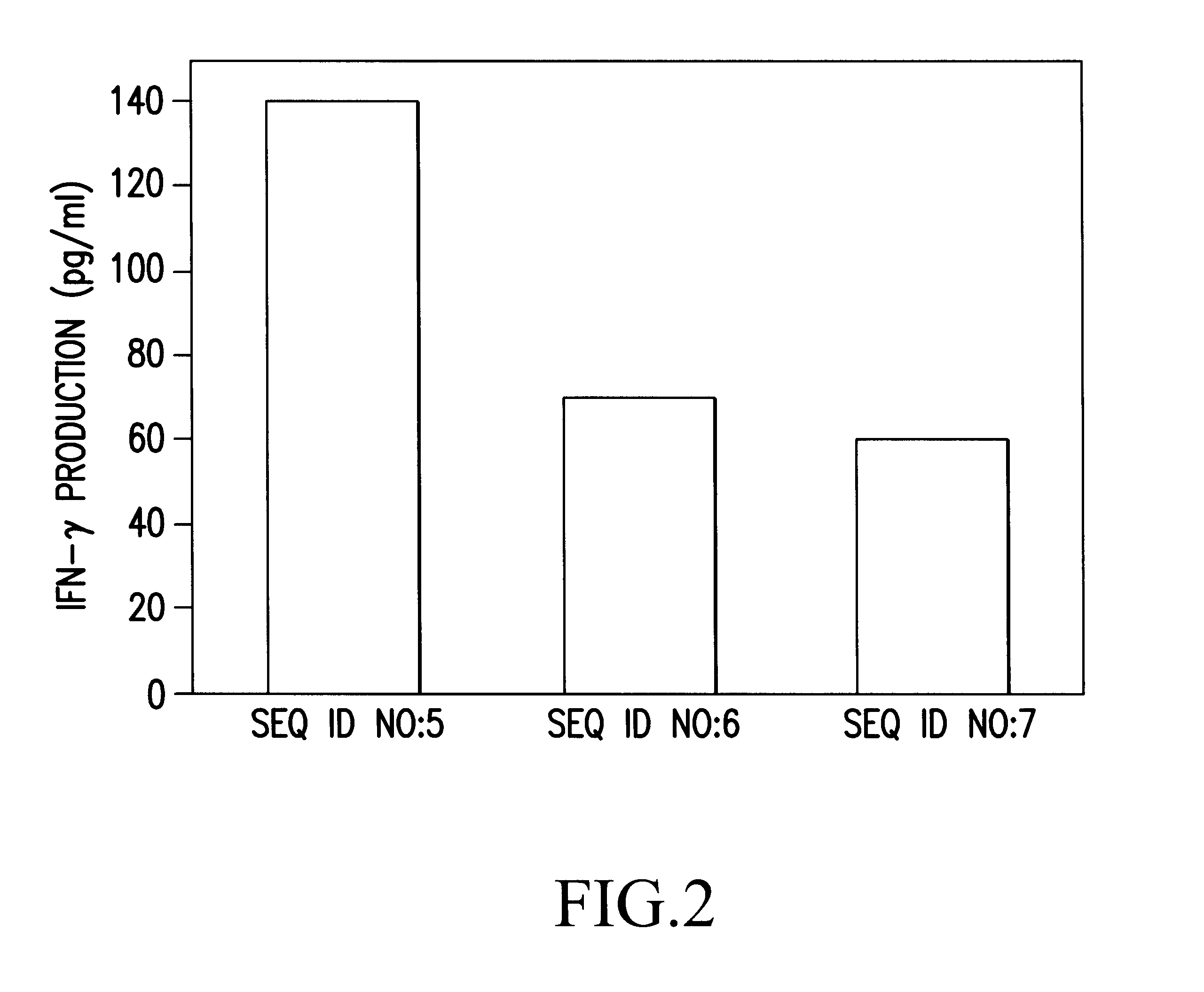Tumor antigen peptide derivatives
a tumor antigen and peptide technology, applied in the field of tumor antigen peptide derivatives, can solve the problems of inability to apply widely to the treatment or diagnosis of various tumors, inability to use widely for tumor antigen proteins of this category, inability to achieve the effects of preventing metastasis, stably maintaining ctls, and enhancing the toxic effect of ctls on tumor cells
- Summary
- Abstract
- Description
- Claims
- Application Information
AI Technical Summary
Benefits of technology
Problems solved by technology
Method used
Image
Examples
example 1
Synthesis of Tumor Antigen Peptide Derivatives
As described above, there are certain rules (motifs) in the sequences of antigen peptides bound and presented by HLA molecules. Concerning the motif for HLA-A24, it is known that in the sequence of peptides consisting of 8 to 11 amino acids, the amino acid at the second position from the N-terminus is phenylalanine, tyrosine, methionine, or tryptophan, and the amino acid at the C-terminus is phenylalanine, leucine, isoleucine, tryptophan, or methionine (Immunogenetics, 41:178-228, 1995; J. Immunol., 152: 3913, 1994; J. Immunol., 155:4307, 1994). With regard to the peptide "690-698 (SEQ ID NO: 3)" which was identified as an HLA-A24-restricted tumor antigen peptide in the foregoing (7) and (8) of Reference Example, amino acid sequences of peptide derivatives containing amino acid substitution(s) according to the above motif are shown in SEQ ID NO: 4.
A variety of such tumor antigen peptide derivatives were prepared in which the second and / o...
example 2
Activity Measurement of Tumor Antigen Peptide Derivatives
The peptides prepared in Example 1 can be examined for the IFN-.gamma.-inducing activity as described in (7) of Reference Example or the CTL-inducing ability as described in (8) of Reference Example so as to demonstrate that these peptides have functions as a tumor antigen peptide. An example is shown below.
Peripheral blood lymphocytes obtained from an HLA-A24-positive healthy human were subjected to in vitro peptide stimulation in the same manner as Reference Example (8) using the three tumor antigen peptide derivatives (SEQ ID NOs: 5-7) synthesized in the above Example 1 to examine whether or not the peptides can induce CTLs. The peripheral blood lymphocytes were recovered one week after the third stimulation with the peptides, and the amount of IFN-.gamma. produced by the peripheral blood lymphocytes in response to the stimulation was measured using, as target cells, HLA-A24-positive KE-4 cells expressing the tumor antigen....
PUM
| Property | Measurement | Unit |
|---|---|---|
| Fraction | aaaaa | aaaaa |
| Fraction | aaaaa | aaaaa |
| Fraction | aaaaa | aaaaa |
Abstract
Description
Claims
Application Information
 Login to View More
Login to View More - R&D Engineer
- R&D Manager
- IP Professional
- Industry Leading Data Capabilities
- Powerful AI technology
- Patent DNA Extraction
Browse by: Latest US Patents, China's latest patents, Technical Efficacy Thesaurus, Application Domain, Technology Topic, Popular Technical Reports.
© 2024 PatSnap. All rights reserved.Legal|Privacy policy|Modern Slavery Act Transparency Statement|Sitemap|About US| Contact US: help@patsnap.com









